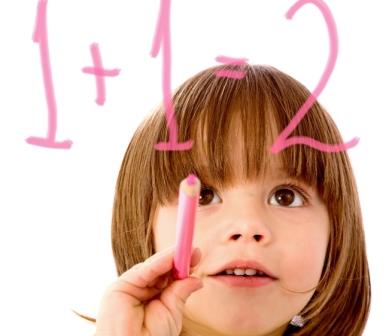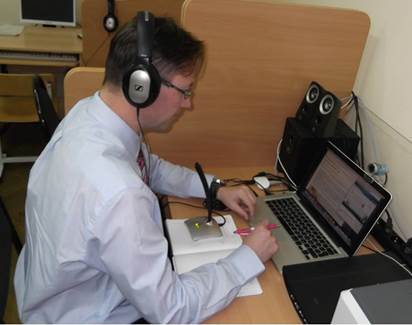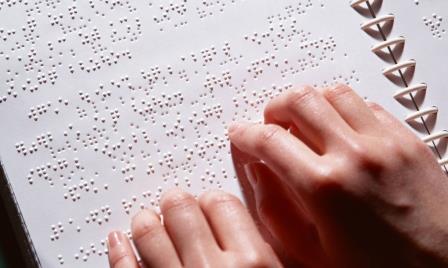References
- Rodionova Yu. V. Modern Requirements for the Use of Infographics in Scientific Articles [Electronic resource]. Cardiovascular Therapy and Prevention [Kardiovaskulyarnaya terapiya i profilaktika]. 2022. No. 2. Electron. dan. URL: https://cyberleninka.ru/article/n/sovremennye-trebovaniya-k-ispolzovaniyu-infografiki-v-nauchnyh-statyah (date of access 08.07.2025) (In Russ.)
- Padilla L. M., Creem-Regehr S. H., Hegarty M., Stefanucci J. K. Decision making with visualizations: A cognitive framework across disciplines. Cognitive Research: Principles and Implications. 2018. No. 3 (1). P. 29. DOI: 10.1186/s41235-018-0120-9
- Shneiderman B. Human-Centered Artificial Intelligence: Reliable, Safe & Trustworthy [Electronic resource]. arxiv.org (February 23, 2020). Electron. dan. URL: https://arxiv.org/abs/2002.04087v1 (date of access 08.07.2025)
- Moss J., Pini B. (Eds.). Visual research methods in educational research. London: Palgrave Macmillan, 2016. 282 p.
- Orynbaev G. T., Kazhikenova A. Sh., Alibiev D. B. Infographics as a modern way of presenting information. [Electronic resource]. Vestnik nauki [Vestnik nauki]. 2020. No. 12 (33). Vol. 4. P. 166–168. 2020. Electron. dan. URL: https://www.VESTNIK-nauki.rf/article/3966 (date of access 08.07.2025) (In Russ.)
- Zhinkin N. I. On code transitions in inner speech. Voprosy yazykoznaniya [Voprosy yazykoznaniya]. 1964. No. 6. P. 26–38. (In Russ.)
- Korotkina I. B. Teaching writing for research publication purposes online. Nepreryvnoe obrazovanie: XXI vek [Lifelong education: the 21st century]. 2024. No. 3 (47). DOI: 10.15393/j5.art.2024.9604 (In Russ.)
- Verbitsky A. A. Personal and Competency-Based Approaches in Education: Integration Problems. Moscow: Logos, 2009. 336 p.
- Card S., Mackinlay J. D., Shneiderman B. Readings in Information Visualization: Using Vision to Think. San Francisco: Morgan Kaufmann, Academic Press, 1999. 686 p.
- Tversky B. Visualizing thought. Topics in Cognitive Science. 2011. No. 3 (3). P. 499–535. DOI: 10.1111/j.1756-8765.2010.01113.x
- Lavrentiev A. N. The Strigonskaya School and Digital Art: Theoretical, Design and Methodological Problems of Information Space Design. Dekorativnoe iskusstvo i predmetno-prostranstvennaya sreda. Vestnik MGHPA [Decorative Art and environment. Gerald of the RGHPU]. 2014. No. 1. P. 4–18. (In Russ.)
- Eberhard K. The effects of visualization on judgment and decision-making: A systematic literature review. Management Review Quarterly. 2023. No. 73. P. 167–214. DOI: 10.1007/s11301-021-00235-8
- Smerecnik C. M. R., Mesters I., Kessels L. T. E. [et al.]. Understanding the positive effects of graphical risk information on comprehension: Measuring attention directed to written, tabular, and graphical risk information. Risk Analysis. 2010. No. 30 (9). P. 1387–1398. DOI: 10.1111/j.1539-6924.2010.01435.x
- Wang D., Guo D., Zhang H. (Eds.). Spatial temporal data visualization in emergency management: A view from data-driven decision: Springer, 2017. DOI: 10.1080/15309576.2019.1592763
- Ballard A. Promoting performance information use through data visualization: Evidence from an experiment. Public Performance & Management Review. 2020. No. 43 (1). P. 109–128. DOI: 10.1080/15309576.2019.1592763
- Serafini F. Reading the visual: An introduction to teaching multimodal literacy. New York: Teachers College Press, 2014. 208 p.
- Nguyen V. T., Jung K., Gupta V. Examining data visualization pitfalls in scientific publications. Visual Computing for Industry, Biomedicine, and Art. 2021. № 4 (1). P. 27. DOI: 10.1186/s42492-021-00092-
- Almukhambetova A., Kuzhabekova A., Kim T. Factors Facilitating and Hindering Women’s Retention in STEM Fields with Advanced Mathematics: The Experience of Undergraduate Female Students from Kazakhstan. Voprosy obrazovaniya [Educational Studies]. 2025. No. 1. P. 25–53. DOI: 10.17323/vo-2025-18297 (In Russ.)
- Bratash V. S., Bysik N. V., Vinogradova Yu. S. Typology and Structure of the School Lesson: Review of Publications Before and After the Introduction of the Second Generation FSES. Voprosy obrazovaniya [Educational Studies]. 2025. No. 1. P. 54–89. DOI: 10.17323/vo-2025-21871 (In Russ.)
- Gordeeva T. O., Sychev O. A. What Lies Behind Teachers’ Autonomy-Supportive and Controlling Teaching Styles. Voprosy obrazovaniya [Educational Studies]. 2025. No. 1. P. 90–116. DOI: 10.17323/vo-2025-21425 (In Russ.)
- Guba K. S., Kuchakov R. K. Monitoring the Activities of Higher Education Institutions: Panel Observations for 2015–2023. Voprosy obrazovaniya [Educational Studies]. 2025. No. 1. P. 117–139. DOI: 10.17323/vo-2025-21676 (In Russ.)
- Dvoretskaya I. V., Uvarov A. Yu. Are Schools Ready for Digital Transformation? Results of a Monitoring of General Educational Organizations. Voprosy obrazovaniya [Educational Studies]. 2025. No. 1. P. 140–168. DOI: 10.17323/vo-2025-19763 (In Russ.)
- Kalashnikova E. K., Karpov E. K. Students’ Digital Literacy: Methodology, Testing, and Assessment. Voprosy obrazovaniya [Educational Studies]. 2025. No. 1. P. 169–196. DOI: 10.17323/vo-2025-17011 (In Russ.)
- Mikhaylova A. M., Avdeenko N. A., Chentsova A. A., Pashchenko T. V. What Effect Size Does Not Tell Us: Methodology for Studying the Formation of Universal Competencies. Voprosy obrazovaniya [Educational Studies]. 2025. No. 1. P. 197–232. DOI: 10.17323/vo-2025-17337 (In Russ.)
- Rozhkova K. V., Roschin S. Yu., Travin P.V. The Fate of a Part-Time Student: Graduates of Russian Universities with Part-Time Form of Study on the Labor Market. Voprosy obrazovaniya [Educational Studies]. 2025. No. 1. P. 233–268. DOI: 10.17323/vo-2025-19898 (In Russ.)
- Solodikhina M. V. The Influence of Epistemological Beliefs and Dispositions on the Development of Critical Thinking Skills in Students. Voprosy obrazovaniya [Educational Studies]. 2025. No. 1. P. 269–303. DOI: 10.17323/vo-2025-19702 (In Russ.)
- Rudskoy A. I., Kabyshov S. V., Borovkov A. I. [et al.]. Fundamental Foundations of the Success and Prestige of Domestic Engineering Education. Vysshee obrazovanie v Rossii [Higher Education in Russia]. 2025. Vol. 34. No. 1. P. 9–29. DOI: 10.31992/0869-3617-2025-34-1-9-29 (In Russ.)
- Karavaeva E. V., Malandin V. V. Staffing Problems of Scientific and Technological Development of Russia in the Context of the New Education Development Strategy until 2040. Vysshee obrazovanie v Rossii [Higher Education in Russia]. 2025. Vol. 34. No. 1. P. 30–41. DOI: 10.31992/0869-3617-2025-34-1-30-41 (In Russ.)
- Nikolaev V. K., Skvortsov A. A., Nikolaev R. S., Bogatenkov S. A. Internationalization of Russian Education: New Challenges and Solutions. Vysshee obrazovanie v Rossii [Higher Education in Russia]. 2025. Vol. 34. No. 1. P. 42–62. DOI: 10.31992/0869-3617-2025-34-1-42-62 (In Russ.)
- Rudneva I. A., Kozyreva O. A. Formation of Professional Identity of Future Teachers through Service-Learning. Vysshee obrazovanie v Rossii [Higher Education in Russia]. 2025. Vol. 34. No. 1. P. 63–81. DOI: 10.31992/0869-3617-2025-34-1-63-81 (In Russ.)
- Avdeeva S. M., Tarasova K. V. Evidence-Based Design for Assessing Generic Competencies in Higher Education: Benefits and Specifics. Vysshee obrazovanie v Rossii [Higher Education in Russia]. 2025. Vol. 34. No. 12. P. 82–105. DOI: 10.31992/0869-3617-2025-34-1-82-105 (In Russ.)
- Khamidulina M. S., Maloshonok N. G. Self-Regulated Learning Is Not for Everyone: Searching for Explanations of the Heterogeneous Effects of Interventions. Vysshee obrazovanie v Rossii [Higher Education in Russia]. 2025. Vol. 34. No. 1. P. 106–127. DOI: 10.31992/0869-3617-2025-34-1-106-127 (In Russ.)
- Guruleva T. L., Lo Wanci. Russian-Chinese Educational Cooperation During and Post-Pandemic Period. Vysshee obrazovanie v Rossii [Higher Education in Russia]. 2025. Vol. 34. No. 1. P. 128–150. DOI: 10.31992/0869-3617-2025-34-1-128-150 (In Russ.)
- Babakova T. A., Dobrynina O. L., Yusupova L. N. Problemy i perspektivy razvitiya akademicheskogo pisma v regional'nom universitete [Problems and Prospects of Academic Writing Development in Regional University]. Nepreryvnoe obrazovanie [Lifelong education: the 21st century: XXI vek]. 2024. Is. 3 (47). DOI: 10.15393/j5.art.2024.9686 (In Russ.)
- Kolesnikova N. I., Ridnaya Y. V. The Integrated Model as a Basis for Teaching Academic Writing in Context of Globalization. Lecture Notes in Networks and Systems. 2022. Vol. 342: Science and Global Challenges of the 21st Century. P. 560–569. DOI: 10.1007/978-3-030-89477-1_54
- Dobrynina O. L. Teaching students the basics of academic writing: focus and text structure. Nepreryvnoe obrazovanie: XXI vek [Lifelong education: the 21st century: XXI vek]. 2022. Is. 3 (39). DOI: 10.15393/j5.art.2022.7847 (In Russ.)
- Heer J., Shneiderman B. Interactive dynamics for visual analysis. Queue. 2012. No. 10 (2). P. 30.













